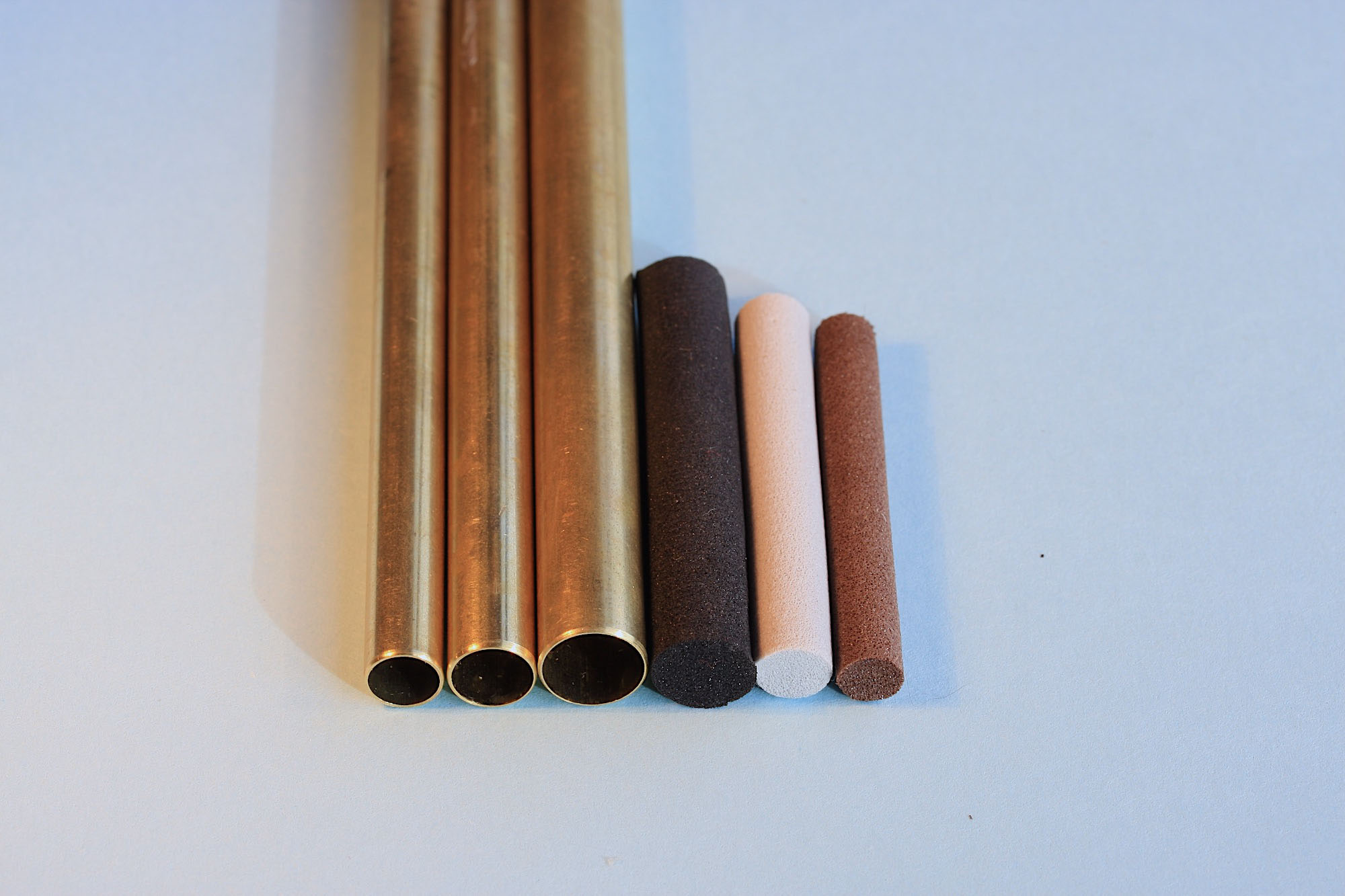Cutting a Foam Cylinder
Discovering foam cylinders revolutionised the way I tie terrestrial patterns.
I now use foam cylinders for tying many different flies, from tiny ants to beetles, bees and wasps to hoppers and cicadas. Foam cylinders are, of course, also used for tying poppers for salt- and freshwater.
Traditional hackled flies float when stiff fibres stick in the surface film. Foam flies, on the other hand, are buoyed by the foam beneath the surface. Sitting within the surface film with nice clean lines as drowned terrestrial insects often do.
If you source the right foam it is also incredibly tough.
Although foam cylinders are widely available, I prefer to cut my own as the range of colours and diameters is extremely limited, and the density and quality of the material is highly variable.
I tried using cork borers and punches to cut foam cylinders but achieved the best results with metal tubing and an electric drill. Any stainless, copper or brass tubing of a suitable diameter will do. Old telescopic radio/TV aerials are a good for a start, there are lots lying around and each one will provide a range of four or six diameters. Alternatively many hobby shops sell brass tubing in a wide range of diameters - aluminium tubing is too soft.

To make a cutting tool, cut a 15 cm length of metal tubing and plug the bottom 3-4cm (depending on the depth of your drill chuck) with epoxy putty, to prevent the drill chuck from crushing it (use a wooden dowel or kebab skewer to impact the putty and to measure the length of the plug).
Attach the plugged end to the drill, once the putty has fully cured (24 hours), spin the open end at a 30 degree angle on a piece of wet 200 grit water/emery paper to sharpen.
Clean off any burr that may have developed on the inside rim and you are ready to attack some foam. The trick to cutting good cylinders is to dip the sharpened end in a jar of water to lubricate it and not to force the cutter through the foam too quickly.
Once the cutter passes through the foam block, withdraw it while it is rotating and remove your cylinder with a pin or dubbing needle (once stationary). The softer the foam the sharper the cutter needs to be. Experiment with drill speed and the amount of pressure you apply until you find the best combination for the thickness and density of the foam at hand.
The best place to source foam for cutting cylinders is a foam manufacturer or distributor. They generally make or import foam sheets in a variety of colours, densities and thicknesses and you are assured of getting exactly what you want.
The sheets are huge and not that expensive, unless you are a commercial tier one sheet could last you and your mates a lifetime. Alternatively, the manufacturer may be happy to give you some off-cuts or samples. Most manufactures produce polyethylene (PE) and ethyl vinyl acetate (EVA) foam. Although both products look similar, the cheaper PE foam is much less durable.
With increasing density, foam becomes less buoyant and compressible but more resistant to tooth damage, better able to hold it’s form and easier to cut. As a general observation higher density foam cylinders are better suited for small (#16 and smaller) and large (# 8 and larger) dry fly bodies, with cylinders of medium density working best for sizes in between.
I recommend EVA foam with a density of around 130 kg/cubic meter (i.e. medium density) for cylinders with diameters of 3-6mm and the same product with a density 220 kg/cubic meter (i.e. high density) for diameters 2mm and 8mm.
Alternative sources of foam include camping mattresses (soft foam), gardener’s knee cushions and children’s toys (medium density) and foam slops or beach thongs (higher density).
All these are made with either PE or EVA foam and density varies considerably from one manufacturer to the next and even between batches from the same manufacturer. Finding the right foam from these sources therefore requires some practice. Fortunately foam products are pretty cheap so the odd mistake doesn't break the bank.
+ Effective Spey flies for New Zealand Trout and techniques for fishing them
+ Evolution of the Swing Minnow - A deadly Trout Spey Streamer
+ Introduction to wonders of Stretch Cord
+ Jelly Midge
+ Jelly Bloodworm and Jelly Grub
+ Jelly Caddis
+ Jelly Leg Colly
+ Jelly Bellow Minnow
+ Jelly Crimp Nymph
+ Hot Foam Hopper
+ Hare's Mask Darter
+ Silicone Wing Cicada - Designing the Fly
+ Silicone Wing Cicada - Tying Steps
+ Gurgle Pop Minnow
